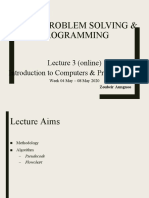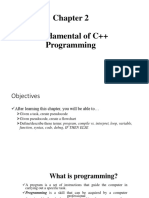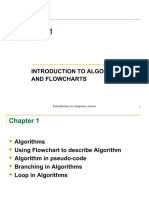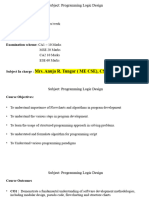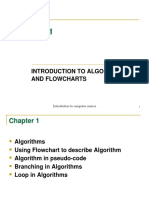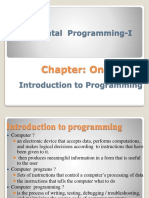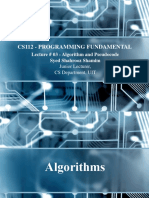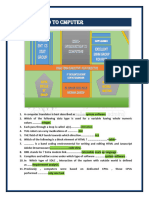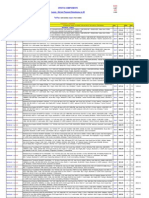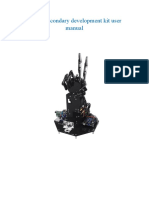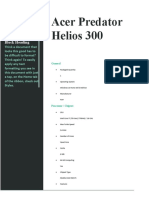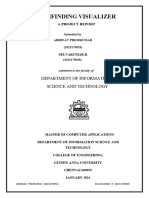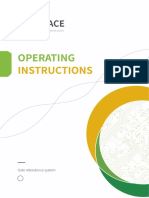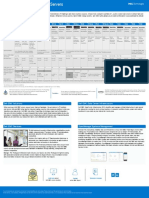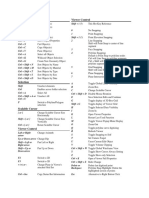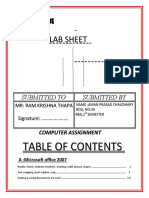0% found this document useful (0 votes)
96 views37 pagesIntro to Programming Basics
The document provides an overview of program design and problem solving through algorithms. It discusses representing real-world problems computationally through algorithms, which are precise step-by-step instructions. Pseudocode is introduced as a way to design algorithms without a specific programming language by using common keywords. Examples show how to write pseudocode algorithms using sequential, conditional, and looping statements to represent different control flows. Flowcharts are also presented as another design tool to visually represent algorithms using symbols for calculations, I/O, decisions, and starting/ending.
Uploaded by
HeybaejuliaCopyright
© © All Rights Reserved
We take content rights seriously. If you suspect this is your content, claim it here.
Available Formats
Download as PDF, TXT or read online on Scribd
0% found this document useful (0 votes)
96 views37 pagesIntro to Programming Basics
The document provides an overview of program design and problem solving through algorithms. It discusses representing real-world problems computationally through algorithms, which are precise step-by-step instructions. Pseudocode is introduced as a way to design algorithms without a specific programming language by using common keywords. Examples show how to write pseudocode algorithms using sequential, conditional, and looping statements to represent different control flows. Flowcharts are also presented as another design tool to visually represent algorithms using symbols for calculations, I/O, decisions, and starting/ending.
Uploaded by
HeybaejuliaCopyright
© © All Rights Reserved
We take content rights seriously. If you suspect this is your content, claim it here.
Available Formats
Download as PDF, TXT or read online on Scribd
/ 37


